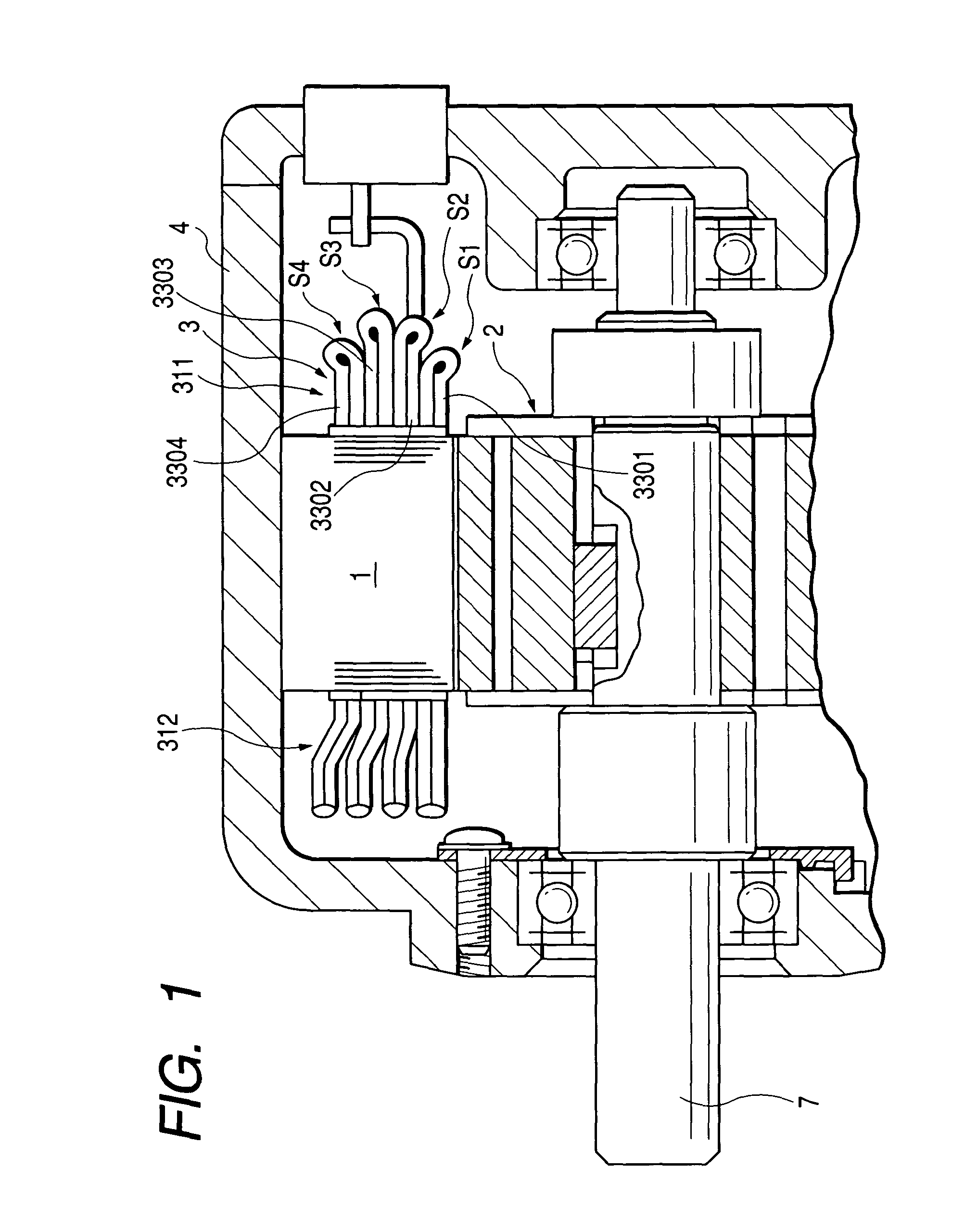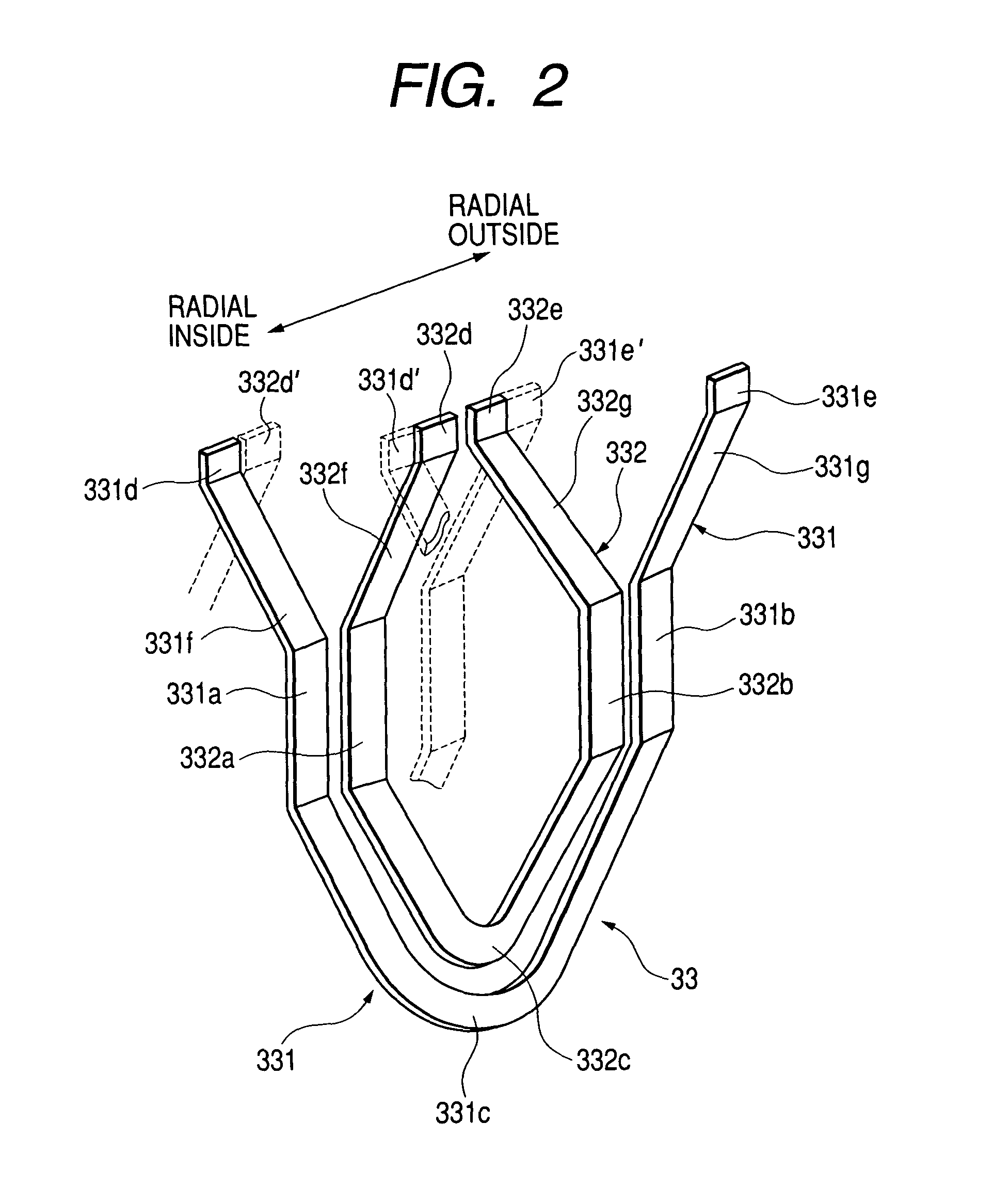Production method of a sequentially joined-segment stator coil of a rotary electrical machine
a production method and stator coil technology, applied in forging/hammering/hammering machines, magnetic bodies, forging/hammering/pressing apparatuses, etc., can solve problems such as damage to the insulating coating on the tip, and achieve the effect of reducing the variation of resistan
- Summary
- Abstract
- Description
- Claims
- Application Information
AI Technical Summary
Benefits of technology
Problems solved by technology
Method used
Image
Examples
Embodiment Construction
[0049]Referring to the drawings, wherein like reference numbers refer to like parts in several views, particularly to FIG. 1, there is shown a high-voltage rotary electrical machine for automotive vehicles according to the invention which is equipped with a sequentially joined-segment stator coil.
[0050]The rotary electrical machine may be used as a drive motor designed to produce power to drive an automotive vehicle such as an electric automobile. The rotary electrical machine consists essentially of a stator core 1, a rotor 2, a stator coil 3, a housing 4, and a rotary shaft 7. The stator core 1 is fixed to an inner peripheral wall of the housing 4. The stator coil 3 is wound in slots formed in the stator core 1. The rotor 2 is of an IPM type which is installed on the rotary shaft 7 supported rotatably by the housing 4 through bearings. The rotor 2 is disposed within the stator core 1. The stator coil 3 is implemented by a three-phase armature winding and supplied with power from a...
PUM
| Property | Measurement | Unit |
|---|---|---|
| angle | aaaaa | aaaaa |
| radius of curvature | aaaaa | aaaaa |
| degree of electrical insulation | aaaaa | aaaaa |
Abstract
Description
Claims
Application Information
 Login to View More
Login to View More - R&D
- Intellectual Property
- Life Sciences
- Materials
- Tech Scout
- Unparalleled Data Quality
- Higher Quality Content
- 60% Fewer Hallucinations
Browse by: Latest US Patents, China's latest patents, Technical Efficacy Thesaurus, Application Domain, Technology Topic, Popular Technical Reports.
© 2025 PatSnap. All rights reserved.Legal|Privacy policy|Modern Slavery Act Transparency Statement|Sitemap|About US| Contact US: help@patsnap.com



